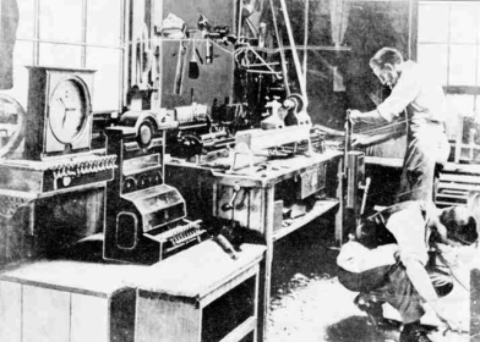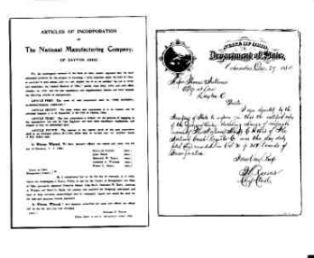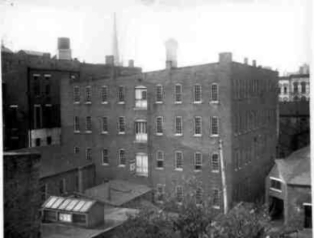- Home
- Introduction
- Website News
- Postscript Magazines
- British History
- Company History
- British History National Cash Register Co. Ltd., 1896 - 1900
- NCR Films
- NCR Vintage Products
- Divisions
- NCR Newscast Tapes.
- Personalities
- The National Cash Register Company Ltd. 1896-1900
- Circuit News - Field Engineering
- Vintage Cash Register Service Aids2
- Supplies
Jacob H. Eckert
Eckert had been a salesman for a Cincinnati china and glassware firm which brought him into frequent contact with cafe and restaurant operators who were among the first to purchase cash registers. Eckert infused new life into the business. Within a week he moved the factory. In the new quarters began a more intensive manufacture of three sizes of the paper roll machine. Meanwhile various important improvements were made in the register. They were the inventions of John Birch, a machinist and brother-in-law of Eckert. These improvements shaped the future course of the machine because they embodied basic features of permanent value.

The National Manufacturing Company and the first two Employees
When Eckert purchased the cash register business none of the machines were equipped with a drawer. One of the first innovations was the introduction by Birch of a drawer and a bell that rang when the key was depressed and the drawer opened. This bell sounded the note of future success. The time would come when, like the historic Revolutionary shot fired at Lexington, it would be heard around the world.
Eckert's introduction of the cash drawer and bell was the final link in the combination of indication, adding mechanism, and. cash drawer which compelled the clerk to go to the register and ring up a sale in order to have access to the drawer. It forced him to deposit the money received and to pay out the change. Here, at last, was real protection. The indicator showed the customer the amount registered on the sale. The proprietor was assured that the amount registered was placed in the cash drawer, and that the proper record would be made by the adding mechanism. Publicity joined with protection in safeguarding receipts. Another major improvement was the substitution of a series of wheels for the paper roll. The purpose of the wheels was to keep a record of the number of times each key was operated. It eliminated the necessity of counting holes as obtained in the paper roll machine.
This advance was the joint work of James Ritty and Birch and was covered by a patent assigned to Eckert when he bought the business in 1881. The patent formed the basis of a large part of the early litigation between the subsequent National Cash Register Company and the large number of competitors who sprang up all over the country. Up to 1881 the Rittys had operated as a partnership under the name of The National Cash Register Company. This was the first use of the name which was to become famous under John H. Patterson.
By 1882 Eckert realized that he could not swing the cash register business on his own. Early in 1882, in conjunction with William Kiefaber, Gustavus W. and William Sander, and Benjamin W. Early who had become associates, he organized The National Manufacturing Company with a capital stock of $10,000 divided into 200 shares of $50 par value each. Later on the capital was increased to $15,000. There were 300 shares of $50 par value each. Birch was one of the incorporators. The company acquired all the Ritty-Birch patents from Eckert who owned the controlling interest and was represented on the Board of Directors by his wife.

Articles of Incorporation of the
National Manufacturing Company
The National Manufacturing Company continued to make cash registers until the fall of 1883 when it changed its quarters to the Callaghan Power Building in an alley between Second and Third Streets, east of Main. The year 1883 was historic in the history of the cash register because it witnessed the entry of John Patterson into the business. His was a modest participation at first, but it opened the way for what became a dominant part. In May he appeared on the books of the company as the owner of 25 shares. Soon after he became a member of the
Board and was later elected Secretary. This was his first official connection with the company. At the annual meeting held in January 1884 it was disclose that he held only 20 shares. His brother Frank, later a close associate in the development of the business, who had also acquired some of the stock, now owned no shares at all. Early in 1884 John H. retired as a director. The Patterson hiatus, however, was brief.
